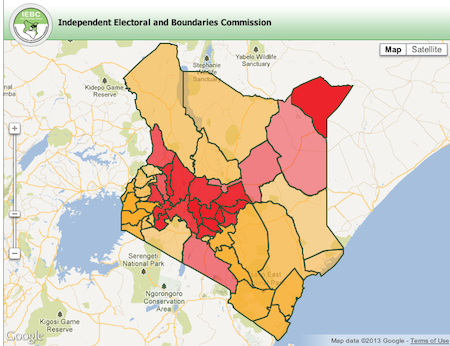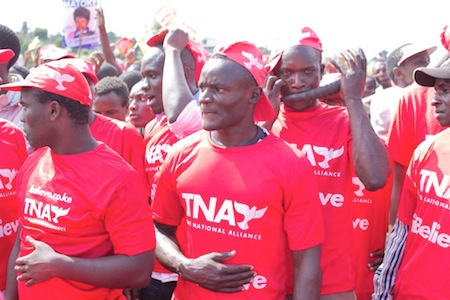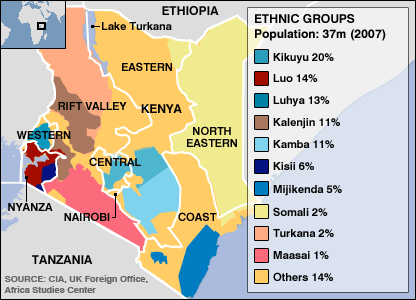It’s been over 24 hours since polls closed in Kenya’s general election, and vote counting has progressed very slowly — at this point, with midnight approaching in Nairobi, the chief elections commission has announced that because of counting delays, a preliminary announcement will not be made until tomorrow. ![]()
What do we know so far?
We don’t know who will be the next president of Kenya, unfortunately, because we don’t have enough results yet — just 13,559 districts out of 31,982 have been counted, and that’s just under 42% of all districts, according to the Independent Electoral and Boundaries Commission.
Uhuru Kenyatta, former finance minister and the candidate of the Kikuyu-strong Jubilee alliance, currently leads the provisional result with 53%, with prime minister Raila Odinga, the runner-up of the controversial 2007 presidential election and the candidate of the Luo-strong Coalition for Reforms and Democracy (CORD) alliance winning 42%. The margin for Kenyatta has gone done significantly over the past few hours, though, and there’s a general understanding that the results do not include as many of Odinga’s strongholds in the west and along the coast.
Musalia Mudavadi, deputy prime minister and the candidate of the candidate of the Amani coalition, which includes many supporters from the Luhya people and the once-dominant Kenya African National Union (KANU), was far behind in third place with just 3%.
One troubling issue is the high number of rejected votes — running at 330,000, that’s more than half the votes that Mudavadi is currently winning and about 7% of the vote. That could mean up to half a million voters or more when the final results are in — perhaps even the margin of victory — will be rejected. As a winning presidential candidate must take a 50% absolute majority, that means that Kenyatta or Odinga will need to win closer to 53% of the non-rejected ballots in order to avoid a runoff.
CORD leaders, such as vice presidential candidate Kalonzo Musyoka, cautioned that the results are incomplete and that Kenyatta’s lead is not a reliable gauge of where the race stands:
“It is important that we await the outcome of the remaining two thirds of the polling stations in order to make any conclusion about the results of this election,” Kalonzo said.
While urging for calm, the VP said in any case, results from Cord strongholds were yet to trickle in adding that results from their stronghold stood at about 10 percent while those of Jubilee were average of 40 percent.
Kalonzo taunted the Jubilee rivals for what he termed as premature celebrations while exuding confidence that their coalition will pull a comeback and stage their rivals lead once results from their strongholds are recorded.
Peter Kenneth, who was leading the Eagle coalition, has conceded defeat having received just 1% of the vote, but cautioned that the independent numbers being reports do not currently match what the IEBC is reporting:
Kenneth urged the electoral body to clear presidential results saying results they were getting from their field agents were different from what IEBC has.
“The country cannot get out of anxiety mood we are heading to. We are getting real time results that differ with IEBC”, said Kenneth.
Due to the fact that there are high regional differences, however, it seems likely that the IEBC’s numbers will ultimately tighten, which would be consistent with pre-election polls and any divergent alternative tallies.
Currently, Odinga leads in 26 counties and Kenyatta leads in 21 counties. (I don’t know what that means for parliamentary results, necessarily, even though results for both the National Assembly and the newly formed Senate are coming in as well).
What else do the results tell us?
Continue reading What we know so far about the Kenyan election results


